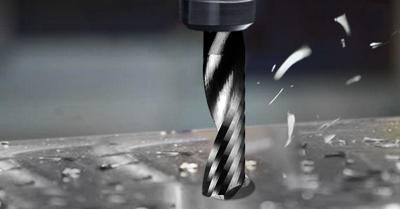Optimizing CNC Machining of Aluminum Parts: The Role of Single Flute End Mills and Cutting Parameters
In CNC machining, particularly when drilling aluminum parts, the choice of cutting tools and parameters is crucial for achieving optimal performance and precision. Single flute end mills, with their unique design and benefits, are a preferred choice for machining aluminum due to their efficiency in chip removal and reduced cutting forces.
Technical Overview of Single Flute End Mills
Single flute end mills are characterized by their single helical cutting edge, which is specifically designed to handle the high-speed, high-efficiency requirements of machining operations. Here’s a closer look at the technical advantages they offer:
Chip Removal Efficiency: The single flute design allows for rapid evacuation of chips, which is crucial when drilling aluminum. Efficient chip removal minimizes the risk of chip re-cutting and ensures a cleaner cutting process.
Reduced Cutting Forces: With only one cutting edge engaging with the material, the forces applied during cutting are significantly reduced. This enables higher feed rates and cutting speeds without compromising tool stability.
Increased Cutting Speed: Single flute end mills can operate at higher rotational speeds compared to multi-flute tools due to their reduced cutting forces. This capability enhances productivity by shortening cycle times.
CNC Cutting Parameters for Single Flute End Mills
When using single flute end mills for CNC machining of aluminum blocks, precise control of cutting parameters is essential for optimal performance. The following guidelines offer a starting point for configuring your CNC machine settings:
1. Cutting Speed (Spindle Speed)
- Recommended Range: 15,000 to 25,000 RPM
- Factors to Consider: Cutting speed should be adjusted based on the diameter of the end mill and the specific grade of aluminum being machined. Smaller diameter end mills can typically handle higher RPMs, while larger diameters may require lower speeds to avoid excessive tool wear.
2. Feed Rate
- Recommended Range: 0.005 to 0.010 inches per tooth (IPT)
- Factors to Consider: Feed rate should be optimized to balance cutting efficiency with tool life. Higher feed rates can increase productivity but may require adjustments to spindle speed and coolant usage to maintain optimal cutting conditions.
3. Depth of Cut
- Recommended Range: 0.025 to 0.05 inches per pass
- Factors to Consider: The depth of cut affects both chip removal and tool stability. For deeper cuts, consider making multiple passes to avoid overloading the end mill and to ensure a smoother finish.
4. Width of Cut (Stepover)
- Recommended Range: 0.1 to 0.5 times the end mill diameter
- Factors to Consider: The stepover value should be chosen to achieve the desired surface finish while balancing tool wear and machining time. A smaller stepover results in finer finishes but increases machining time.
5. Coolant and Lubrication
- Recommended Types: Air blast, mist coolant, or flood coolant
- Factors to Consider: Effective cooling is crucial to prevent overheating and maintain tool life. For aluminum, using a coolant can help manage heat and reduce the risk of material adhesion to the cutting tool.
Advanced Tips for Single Flute End Mills in CNC Machining
Tool Path Optimization: Use optimized tool paths such as trochoidal milling for improved chip removal and reduced cutting forces. This technique helps maintain consistent cutting conditions and enhances tool life.
Tool Wear Monitoring: Regularly inspect the end mill for signs of wear or damage. Implement tool wear monitoring techniques to predict and schedule tool changes, minimizing downtime and maintaining machining accuracy.
Material-Specific Adjustments: Adjust parameters based on the specific alloy of aluminum being machined. Different alloys can have varying hardness and machinability characteristics, which may require fine-tuning of cutting speeds and feed rates.
Conclusion
Single flute end mills are highly effective for CNC machining of aluminum blocks, offering advantages in chip removal, cutting forces, and cutting speeds. By carefully configuring CNC cutting parameters such as spindle speed, feed rate, depth of cut, and coolant usage, you can optimize performance and achieve high-quality results in your machining operations.
Experiment with these parameters and monitor the results to fine-tune your processes for specific applications. With the right setup, single flute end mills can enhance productivity, extend tool life, and improve the overall quality of your machined parts.
Happy machining, and may your CNC operations be efficient and precise!

